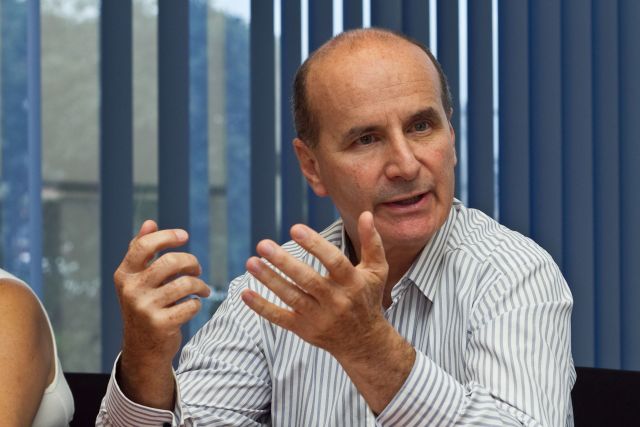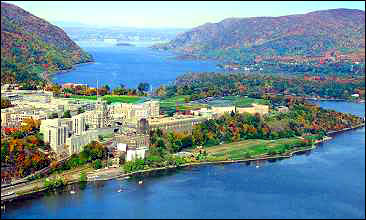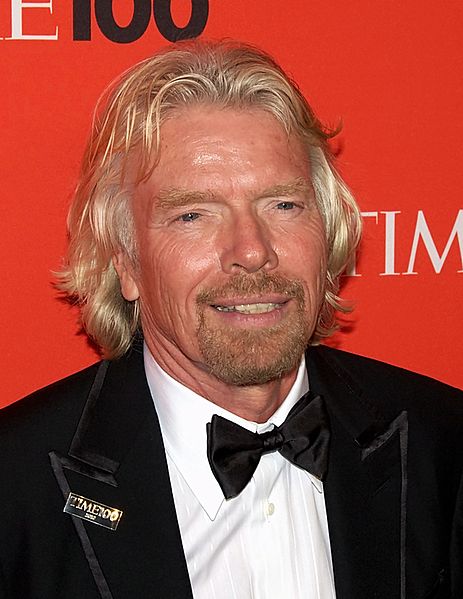The low carbon future: Carbon War Room President, José María Figueres
The former President of Costa Rica and President of the Carbon War Room, José María Figueres, discusses carbon offsetting and scalable clean technologies with Climate Action

José María Figueres served as President of Costa Rica from 1994 until 1998 and created a comprehensive national development strategy based on the tenets of sustainability: sound economics, investment in human development, and a strong alliance with nature.
Mr Figueres pioneered the linkage between sustainable development and technology, which he continued after government by helping create and then leading the United Nations ICT Task Force as its first Chairperson.
He was the first person to become CEO of the World Economic Forum in 2003, where he strengthened global corporate ties to social and governmental sectors.
He joined the Carbon War Room in 2009 and currently serves as its President. The organisation accelerates entrepreneurial solutions to achieve profitable, gigaton-scale reductions of carbon emissions.
You have made it a dedicated mission in life to confront two of humanities greatest challenges, the war on poverty and the war on climate change, what sustains your determination?
On the one hand the values that drive me, and on the other hand a deep conviction we can win both wars. I grew up in a family that believed every person should be given a starting point – an opportunity in life – upon which, depending on their personal efforts, they could then achieve different results. At the same time, my parents always taught us the virtues of living austere lives and not living beyond ones means. To win the war against poverty means creating opportunities for all, especially for those that have least. Winning the war on climate change means living within the limits of our planet.
Today, with the economic wherewithal we have created and the technological advancements we have, we can win both wars with the same plan: migrating to a low carbon economy. That shift represents the largest economic opportunity humanity has ever had.
When did you first become drawn to the environmental movement and issues concerning ecology, climate change and sustainability? 
During my last year at the United States Military Academy, West Point (pictured left), I took a course on management of resources. The army is, after all, a big user of them. The emphasis placed on responsibility and efficiency of their use encouraged me to begin a professional journey in which I have always looked at the environment and resources as an opportunity for not being wasteful.
Beyond that, the understanding I have built over the years of climate change and its principal cause, carbon emissions, has made me seek opportunities to lower them based on efficient market-based solutions in order to attract the entrepreneurial solutions and capital required to do so.
Do you feel there has been a lack of action and political leadership on climate change matters in the US and in Europe?
I believe Europe has been a global leader when it comes to taking action on climate change. In the US there is a good amount of activity at city and state level, in spite of the federal level absence. What is important to recognise here, is that while about 50 per cent of emissions require some type of regulation or state intervention, the other half does not. It is this other half that represents terrific business opportunities, the one we should concentrate and act on with market-based solutions.
In 1994, when you were President of Costa Rica, your government made the pioneering move of applying a carbon tax on all fuels – why have so few other governments followed your example?
Governments are normally short-term oriented and greatly influenced by public opinion polls. A tax on carbon emissions does not fit into these moulds. When we passed our carbon tax there was a one term constitutional limit on governments. Hence we had the luxury of not having to worry about being re-elected, and could take bold initiatives such as this one.
You are the President of The Carbon War Room, could you describe the central mission of this organisation and how it works?
The Carbon War Room (CWR) is a global initiative set up by Sir Richard Branson (pictured right), alongside other industry entrepreneurs, whose mission is to accelerate entrepreneurial solutions and help deploy profitable and scalable clean technology. Currently, the world has the technology and policy in place to tackle 50 per cent of the climate challenge.
The Carbon War Room takes a global, sector-based approach, and looks for ways to reduce carbon at gigaton scale. We are dedicated to breaking down industry market barriers and getting money flowing towards low carbon opportunities. By leveraging our power to attract key industry and financial players to the table, we look to help create market demand for clean technologies. In practice, the Carbon War Room plays a variety of catalytic roles, such as providing market information to an industry sector to help create new market demand or devising self-financing mechanisms to get capital moving to clean technologies.
If 50 per cent of today’s carbon emissions can be profitably offset by existing technologies, what is stopping that happening?
Currently, we do have the technology and policy in place to tackle 50 per cent of the climate challenge. The job at hand now is how to shift existing capital to all entrepreneurial solutions that are profitable today and reduce massive amounts of carbon. To do this, we must remove the market barriers that are currently stopping the successful scaling of these technologies globally. The Carbon War Room focuses on a powerful force – that is business, capitalism and the entrepreneurial spirit. We are dedicated to breaking down industry market barriers, and getting money flowing towards low-carbon opportunities.
Given that the political sphere has not made sufficient progress on climate change, will the business world be able to instigate radical gains in moving the world closer to a carbon neutral economy? If so, how?
We see the flow of capital to clean technologies as the bottleneck, not policy or technology. If we can create scaled market demand for clean technologies using the power of the market – and the force of capitalism with companies chasing profits – then we can make great strides towards a lower carbon economy.
Are we coming to the end of the Industrial Revolution as we know it?
I believe we are coming to the end of a period of carbon intensive economic activity and development. The road ahead must and will be on a different track towards lower emissions. The challenge and real opportunity is moving from a world that emits over 800 grams of carbon per unit of global GDP today, to one that will emit only 8 by 2050. This represents a hundred fold decrease in carbon emissions. Imagine the new business models, technologies, and possibilities for wellbeing that will emerge from this transformation!
What do you hope to see replace it?
A low carbon economy. To this end, we will need to reinvent everything: the way we transport ourselves, the way we live, the way we work, the way we interact in society.
What can First World countries do to assist developing countries in making the transition to a global, low carbon economy?
Moving to low carbon economies represents many win-win opportunities. It’s a great opportunity for business and government to work together. It’s a wonderful new option for the North – owner of many needed technologies – to cooperate with the South. Finally, it represents a new option for South-South cooperation. More and more of this is beginning to happen around the world.
Economies and businesses can be notoriously slow to change and sluggish in adopting new models, what kind of opportunities can the move towards a low-carbon economy, or business model, present? And why is sooner better than later?
The opportunities are with us today – if we look hard enough, and they will become more and more abundant once we can correct the current market barriers that prevent the successful scaling of clean technologies globally. Take aviation: the renewable jet fuels market can achieve significant scale by 2020. In 2011 alone, airlines spent $140 billion on kerosene-based jet fuel and $200 billion is projected for 2012. Yet, alternatives are available. Two types of renewable jet fuels have been approved for use in the last eighteen months and several more are in the testing and certification pipeline. In addition, the first few commercial renewable jet (and diesel) fuel production facilities came online this past year..jpg)
However, significant market barriers remain. Renewable fuel entrepreneurs are struggling to meet capital requirements due in part to investor uncertainty in such a complex technology and market landscape. There are concerns surrounding the entire value chain, the scale-up risk, technology status, environmental and carbon impact, and feedstock availability, as well as perhaps the most critical: the cost. With all these barriers inhibiting the scale up of biofuels, there is currently no publicly available source of information documenting or comparing these factors across companies. Our strategy, at the Carbon War Room, is to address these market barriers and try to kick-start the market. We are working to dismantle the market failures by allowing strategic buyers – in this case, the airlines – to place the right bets on an affordable, scalable, sustainable future fuel choice.
To solve the information barrier, we teamed up with Elsevier, a Dutch Fortune 500 company and the world’s largest scientific publisher, to build an online database of companies. In December last year the Carbon War Room created http://www.RenewableJetFuels.org, which evaluates and ranks companies using criteria based upon companies’ economic viability, scalability, and sustainability. There are now over a hundred companies that our team is tracking in the database, which is crosschecked and curated by industry experts. We are also helping to get renewable jet fuel deals done; deals that become the model for the industry to follow, starting with Virgin Atlantic Airways and our other partners. The Carbon War Room is looking at a variety of deal models, and none of them rely on government intervention.
In the past, being environmentally responsible in business was always perceived as a cost, rather than an opportunity to actually increase profits. Why is this now changing?
 There are many factors at play. Greater regulation, better public awareness and more competitively priced products and services – but for me the key is market demand. This will continue to strengthen sustainability as a strategic imperative for business today. A great anecdotal example is from the recent Hurricane Sandy disaster in New York. Earlier, in 2008, the mayor of New York had bravely tried, though unsuccessfully, to mandate for all future New York cabs to be hybrids. Cabbies baulked at the idea.
There are many factors at play. Greater regulation, better public awareness and more competitively priced products and services – but for me the key is market demand. This will continue to strengthen sustainability as a strategic imperative for business today. A great anecdotal example is from the recent Hurricane Sandy disaster in New York. Earlier, in 2008, the mayor of New York had bravely tried, though unsuccessfully, to mandate for all future New York cabs to be hybrids. Cabbies baulked at the idea.
Last month, I happened to be in Manhattan just after the hurricane hit – and the only cabs left on the streets that day were hybrids. Gas lines were 10 hours long in places. Speak to any cabby today about hybrids and what they think about them now – post Sandy. They will tell you a very different story indeed. And many now intend to buy hybrids with or without regulation. An extreme example maybe, but a clear one. The power of market forces to bring about change for the good is staggering. We now need to accelerate it for all industry sectors.
Do you think there are any solutions that the private sector could be supplying that would increase the sustainability of cities?
For cities, the Carbon War Room, like other groups, has found that many solutions are already available. The challenge we see is that there is a lack of market information about a great deal of the technologies and access to capital for city authorities. We set up our Green Capital operation to tackle this. Currently, we work with over 30 city authorities and mayors globally, helping them to share best practices, vetting and showcasing the latest and greatest technologies for them – and devising financing mechanisms to assist the scaled retrofitting of commercial properties. In the US last year we announced a $650 million deal with the ‘Property Assessed Clean Energy Commercial Consortium’ to help move private capital into Sacramento, California and Miami-Dade county, Florida – and bring about scaled retrofitting of buildings there. We expect work on the ground to begin there in 2013.
What innovations need to come to market? Do you know of any products or technologies that are really making a difference?
Again, we believe that 50 per cent of the technologies exist today. They are proven and potentially profitable. Currently lacking, but far from impossible, is the need for greater market demand for these technologies and the capital to bring them to significant scale. Take maritime shipping. There are over 350 clean technologies that would help save $70 billion of fuel for ship owners every year, but they are currently lying idle – some are as simple as eco-paints for vessel hulls which reduce friction and stop the build-up of organic matter.
There are some innovative methods of carbon recapture, from pumping CO2 into coal seams to creating huge banks of carbon consuming algae – are there any that you find particularly interesting?
The Carbon War Room focuses either on existing technologies that are potentially profitable today or in the near term, that need to be scaled globally in existing markets if they are going to cut gigaton chunks out of society’s annual carbon emissions. These range from energy efficiency technologies for buildings, or industry sectors where currently the technology is largely absent, like in maritime shipping or on sustainable island nations. We don’t currently focus on technologies to capture carbon emissions from the likes of power stations, as carbon capture is undergoing major R&D investment and testing to prove its economics and show that it is environmentally safe.
There is probably no simple solution that can address overconsumption and mitigate resource depletion, but what would you say are some essential steps in the right direction?
To do and have less is not the only way to defeat the problem of climate change and conserve the environment. And quite frankly, if the only choice we have is to do and have less, then we are going to lose the battle. The other choice is to build a prosperous low carbon economy. To do this we need to engage motivated groups of people, making innovations to solve climate problems while chasing profit at the same time.
Do you believe that global economies will eventually shift from resource plunder to protection?
Ever the optimist, I see the challenges of our generation not as inhibitors of creating a better world, but as exciting opportunities. Far from being the biggest threat, I believe that climate change is the greatest economic opportunity we have ever seen. The challenge today is how to rectify current market failures that would make resource plunder commercially unattractive.
Do you think it is possible to see, in our lifetimes, the creation of a stable and sustainable global economy, where social cohesion, inclusion, and equal opportunity for all is promoted and where efficient resource use is incentivized and any environmental and social damage or expense is borne by those generating it?
What you describe is a destination. What is important is to start a process that picks up speed and moves us in that direction. While we support and urge the intergovernmental negotiations on climate change, businesses have already been on the move around the world. They are transforming environmental stewardship into positive bottom line results. They understand consumers are growing increasingly supportive of businesses that take this direction. Back in 1985 the biggest environmental challenge was the depletion of the ozone layer by the use of CFCs. When we finally committed to fixing the problem, business moved to substitute CFCs, and governments enacted the Montreal Protocol. In only 10 years, by 1995, we fixed the problem. We can repeat that success story, even though it will take us longer given the dimension of the climate change challenge.
What do you think the energy sector and the sustainability industry will look like in 10 years time?
If within the next 10 years we can produce profitable, scalable, replicable models for renewable energy and sustainable living – as the Carbon War Room is currently
aiming to do with in its current project with the discrete island economy of Aruba, which seeks to go 100 per cent renewable by 2020 – then we stand a great chance of transforming these sectors permanently. But you have to start the process by proving change can be made.
Which of your own many achievements are you most proud?
No matter what the circumstances, I always find a way to see the glass at least half full. Less an achievement, it is an attitude towards life, towards challenges and opportunities. A positive disposition goes a long way to getting anything done. The rest can be done with a good dose of teamwork, not taking yourself too seriously, and being willing to give credit to others.






